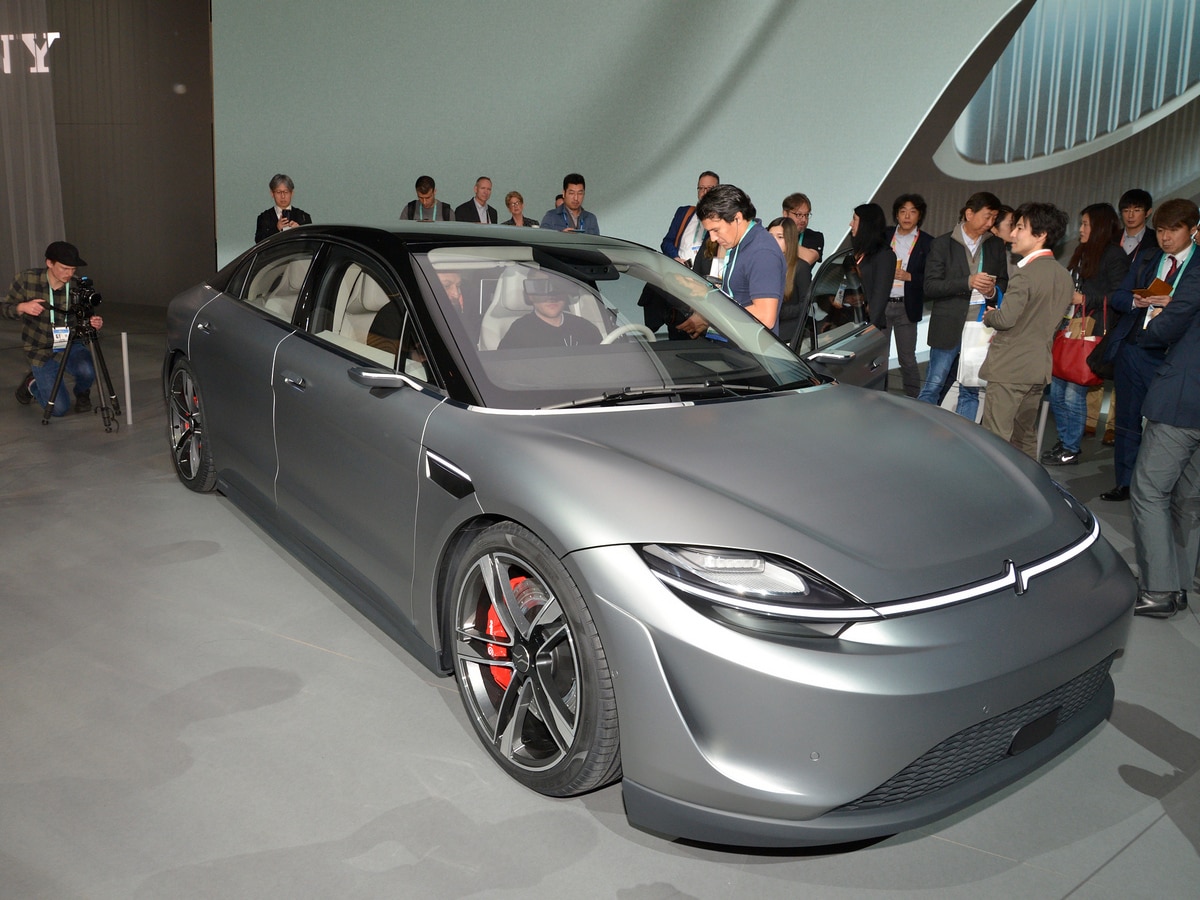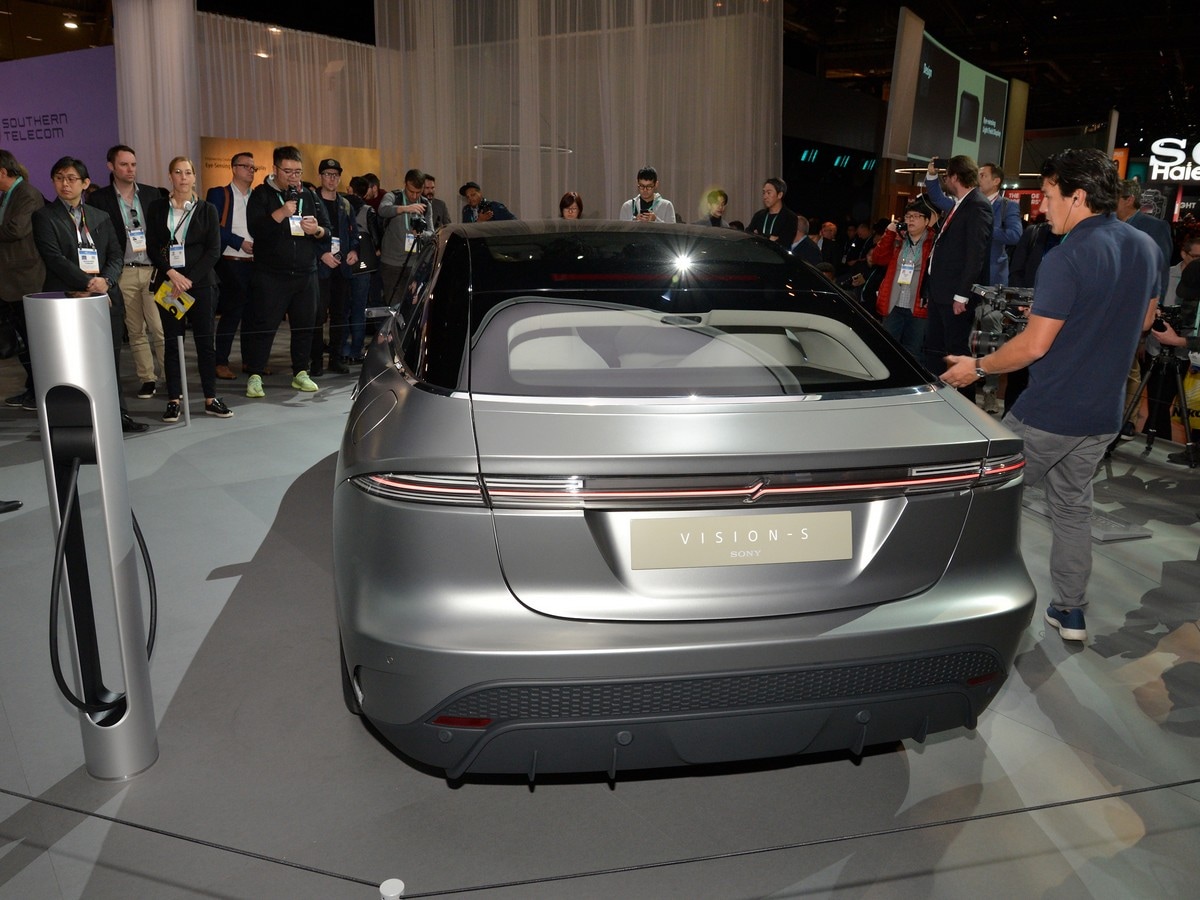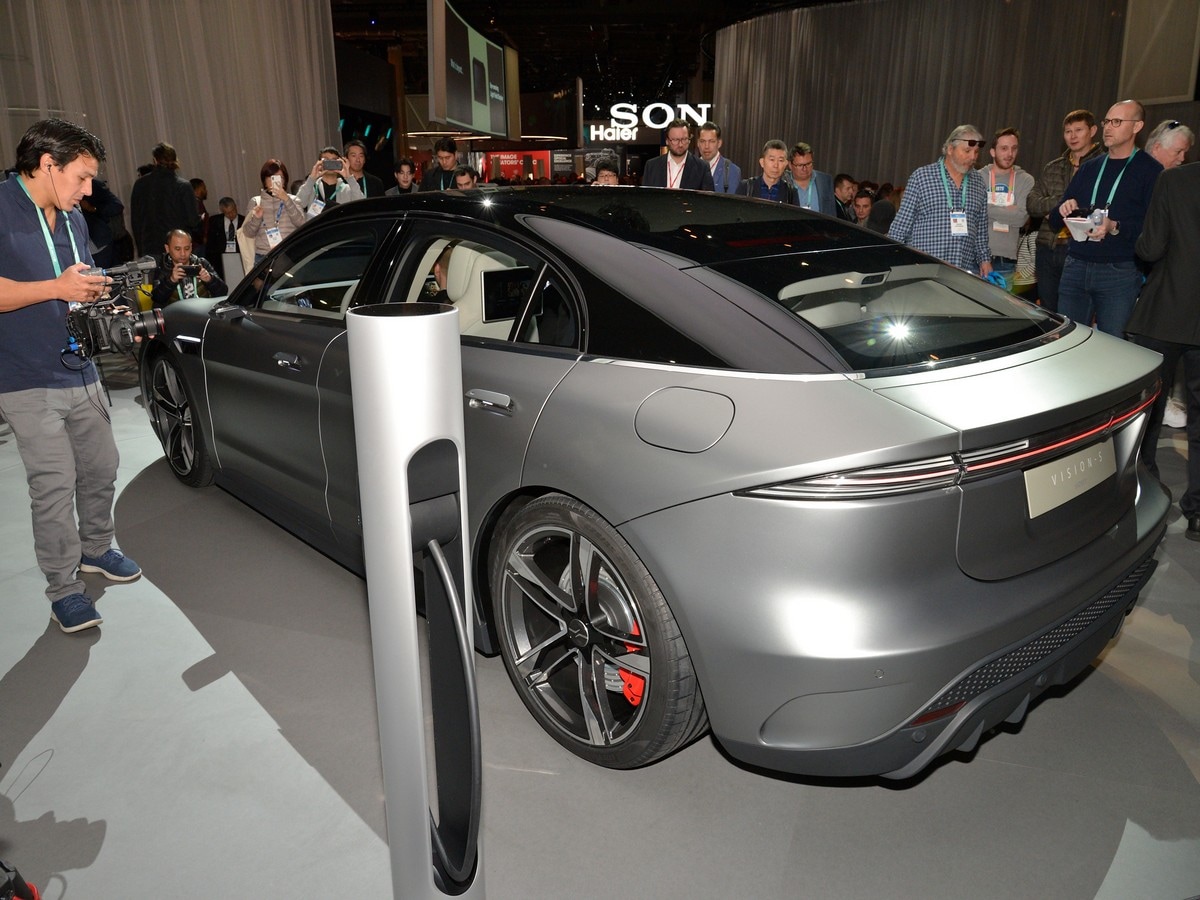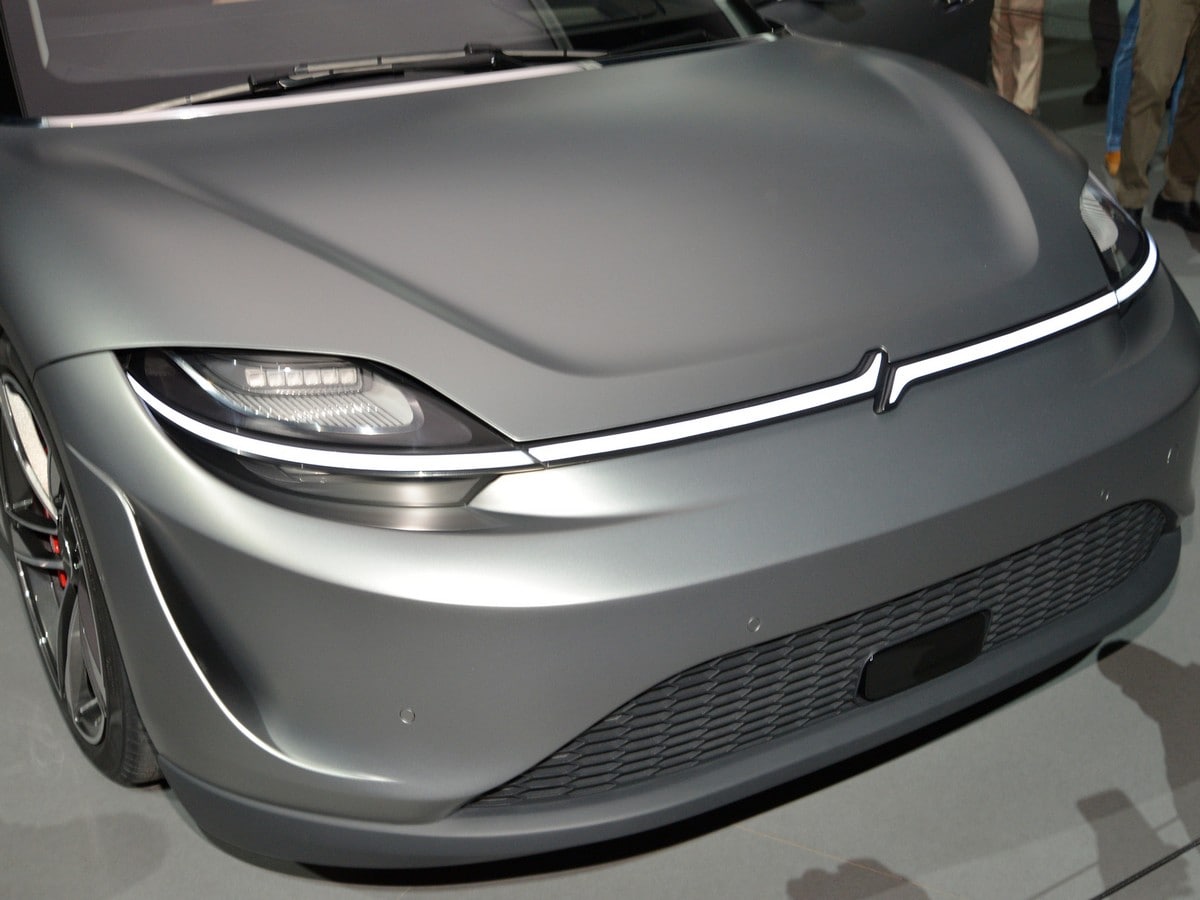- First concept car from Sony
- Fully functioning prototype
- Showcases driver assists
- No plans for production
Sony has long been a leader in advanced technology. And just to be clear, it really isn’t trying to enter the car manufacturing industry, at least not in the near future. But its working prototype, the Vision-S sedan, which debuted at the 2020 Consumer Electronics Show (CES), is an impressive demonstration of the power of the consumer electronics juggernaut to build just about anything the company puts its mind to create.
Sony’s new Vision-S breaks into the electric vehicle transportation arena in a big way. Packed with 33 high-end technology sensors that paint a 3D picture of the vehicle’s environment, it’s clearly oriented to autonomous operation. As opposed to other odd-looking, anti-automotive industry autonomous prototypes that appear more moon-ready than street-compatible, this vehicle is a clean-looking, stylish machine that has generated great interest from both the public and automotive enthusiasts.
LiDAR showcase
Sony has long been a disrupter in various business endeavors using its huge engineering and production abilities to take on unique areas of study. The Vision-S features solid-state LiDAR technology that works with sensor fusion to help the vehicle see in the most difficult environments, such as fog and poor lighting, which have frustrated other autonomous vehicle builders.
The Vision-S looks all the part of a performance coupe with massive disc brakes and color-keyed rotors, alloy wheels and low-profile tires. The silver body color and high visibility window arrangement work with the styling to create a sporty appearance. High-intensity headlights, LED body treatments and side venting continue to add to the visual appeal. As a final touch, a speed-sensitive rear deck spoiler elevates to aid high-speed handling and increase the Vision-S’s performance persona.
Multiple video monitors
As you would expect from a company known for its audio and video electronics, the instrument panel of the Vision-S is covered, side-to-side, with video monitors that help inform (and entertain) the driver and vehicle occupants. An advanced facial recognition system welcomes the driver and passengers as they near the Vision-S, adjusting internal vehicle settings that it records in its memory from past driving experiences.
But the Vision-S is more than just a pretty face for its occupants. An elaborate internal sensing system called Time of Flight (ToF) determines the exact positioning of the vehicle occupants and tunes the internal “infotainment” elements to improve their safety and enjoyment of the drive. Within sight of all passengers are high-definition screens that are interactive with devices or car-based content. Tied closely to the system is Sony’s own 360 Reality Audio that tunes speakers integrated into the seats for a more immersive audio experience.
Battery-electric power
According to Sony, the car has been fully tested on the road and features all-electric battery power, the massive power pack mounts low in the chassis for improved handling. The prototype’s design will meet all federal safety requirements, so this is far more than simply an exercise to test sensors and sound systems. Stepping into the electric vehicle transportation arena is a big step even for Sony but one it doesn’t take lightly. Using its time-tested artificial intelligence and robotics divisions to build this prototype, it’s clear Sony is serious about entering this market in the coming decade.
“The Vision-S features the best of the best Sony technology,” stated Karol Warminiec, National Training Manager for the Sony Vision-S. “The vehicle systems are set to react in nanoseconds to adjusted internal systems, all triggered by our high-quality sensors. This is a high-quality platform and perfect for demonstrating a product such as the 360 Audio that delivers the ultimate sound quality. We are exceedingly proud of the Vision-S prototype.”











